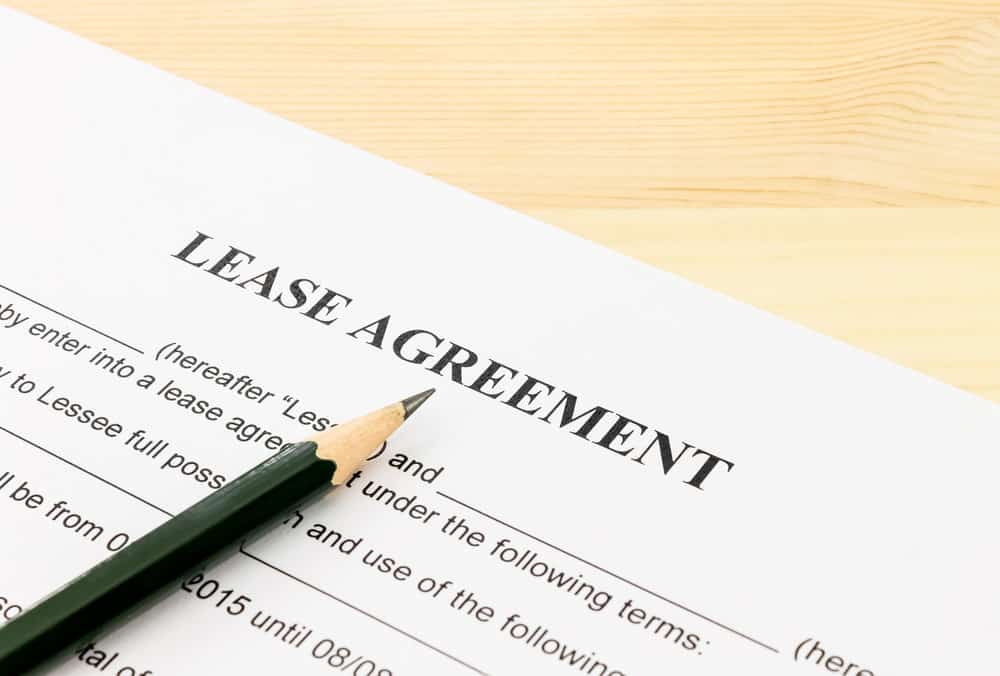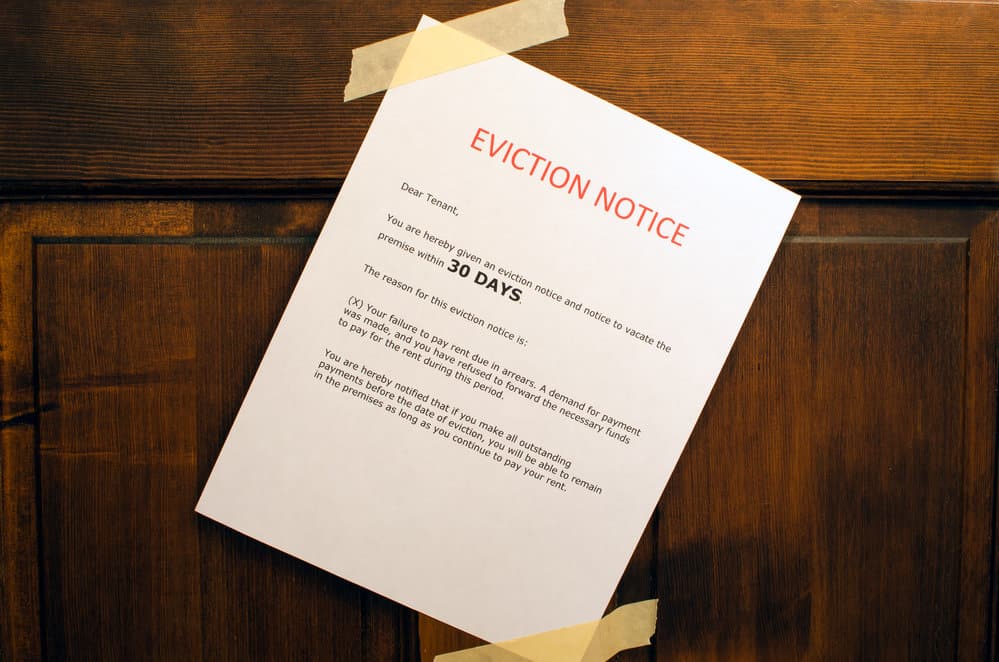One of the most important aspects of a rental agreement is the lease period, which outlines the terms and duration of the agreement between the landlord and tenant. However, situations may arise when a landlord considers breaking their lease with the tenant.
As a landlord, it is crucial to understand the legalities and circumstances under which a lease can be terminated. State laws vary, and landlord and tenant rights must be considered to avoid unnecessary disputes and potential legal consequences.
This article will discuss the situations where a landlord can legally break a lease, the rights of the tenant, and the steps to take for ending the rental agreement, providing a comprehensive understanding of this critical decision in property renting relationships.
Understanding Lease Agreements
Lease agreements are essential in defining landlords’ and tenants’ rights and responsibilities. To comprehend how a landlord can break a lease, it is essential to distinguish between a lease and rental agreements, understand their key terms, and recognize the role of state and federal laws.
Lease vs. Rental Agreement
A lease agreement is a legally binding contract between a landlord and a tenant outlining the terms and conditions for renting a property. It typically spans a fixed period, usually 6 to 12 months or longer, and cannot be altered by either party until the lease term expires. Alternatively, a rental agreement is a month-to-month contract, allowing flexibility for both parties to make changes with proper notice.
Key Terms and Conditions
Lease agreements consist of several key terms and conditions that are crucial in understanding the relationship between a landlord and tenant:
- Rent: The monthly payment amount owed by the tenant to the landlord, usually due on the first of each month.
- Security deposit: A refundable payment made by the tenant before moving in, held by the landlord to cover potential damages or unpaid rent.
- Maintenance and repairs: Responsibilities of the landlord and tenant regarding the upkeep and repair of the property.
- Rights and obligations: Specifying the rights and duties of both parties, such as the landlord’s right to enter the property for inspections or the tenant’s obligation to refrain from engaging in illegal activities on the premises.
- Termination: The process of ending the lease agreement, including the required notice period and any applicable penalties for early termination.
State and Federal Laws
Lease agreements are subject to state and federal laws, which govern the rights and responsibilities of landlords and tenants. While these laws may vary by state, there are some common landlord-tenant laws:
| Law | Description |
|---|---|
| Anti-discrimination laws | Prohibit landlords from discriminating against tenants based on race, religion, or disability. |
| Security deposit laws | Regulate the amount a landlord can collect as a security deposit and dictate the time frame for its return upon lease termination. |
| Notice requirements | Establish the minimum notice period for lease termination or rent increases. |
| Habitability laws | Require landlords to maintain safe and habitable living conditions for their tenants. |
Understanding these key elements of lease agreements and the governing laws helps navigate better situations where a landlord may need to break a lease.
Common Reasons to Break a Lease
Breaking a lease, also known as lease termination, can happen for various reasons. The process entails either the tenant or the landlord requesting to end the lease agreement before its originally scheduled expiration date. This section will explore the common reasons for lease termination from both tenant and landlord perspectives.
Tenant-Requested Termination
There are several reasons why a tenant may want to break their lease:
- Job relocation: A tenant may need to terminate their lease early due to a job relocation or change, making it necessary for them to move to a new area.
- Personal circumstances: Life events, such as marriage, divorce, or health issues, may lead to changes in a tenant’s living arrangements, prompting them to break their lease.
- Housing dissatisfaction: If the property does not meet the tenant’s expectations or becomes uninhabitable, they may have grounds to terminate their lease.
- Month-to-month: A tenant on a month-to-month lease generally has more flexibility to end the lease as desired.
Sometimes, tenants can negotiate with their landlords to reach a mutual agreement for early lease termination. This may involve a termination clause in the lease, with specific requirements and penalties determined by each party.
Landlord-Requested Termination
Landlords also have their reasons for wanting to terminate a lease agreement:
- Nonpayment of rent: If the tenant consistently fails to pay rent on time or at all, the landlord may have grounds to break the lease.
- Property damage: If the tenant has caused significant property damage, it can provide the landlord with a valid reason to terminate the lease.
- Lease violations: A landlord may terminate a lease if a tenant violates agreement terms, such as subletting without permission or engaging in illegal activities.
It’s important to remember that breaking a lease can be time-consuming and costly for both parties. Familiarizing oneself with lease terms, the rights of both landlords and tenants and local regulations can help mitigate potential issues in the lease termination process.
Legal Grounds for Lease Termination
There are several legal grounds on which a landlord can break a lease. These include the following:
Implied Warranty of Habitability
A landlord must ensure the rental property meets specific health and safety codes. The Implied Warranty of Habitability requires that a landlord provides a safe and habitable living environment, which includes proper heating, running water, and essential utilities. If a landlord fails to meet these requirements, the tenant may have a case for legal lease termination.
Harassment and Retaliation
It is illegal for a landlord to harass or retaliate against a tenant for exercising their rights or reporting a violation. Examples of harassment and retaliation include increasing rent, reducing services, or initiating wrongful eviction processes. Tenants experiencing harassment or retaliation can seek legal remedies, including lease termination.
Discrimination
The Fair Housing Act prohibits landlords from discriminating against tenants based on race, color, national origin, religion, sex, familial status, or disability. If a landlord is found to have acted in a discriminatory manner, a tenant may have grounds for lease termination and other legal actions.
Servicemembers Civil Relief Act (SCRA)
The SCRA is a federal law that protects active-duty military service members, including lease termination rights. Under the SCRA, service members can break their lease if they receive a change of station or are on active duty for at least 90 days. The service member must provide their landlord with a written notice and a copy of their orders.
Proper Notice and Procedures
Proper notice and procedures are crucial when determining whether a landlord can legally break a lease. This section will discuss tenant’s notice to terminate and the landlord’s notice requirements.
Tenant’s Notice to Terminate
When tenants want to terminate a lease early, they must provide a written notice to the landlord. This termination notice should include the reason for ending the lease, the desired termination date, and a forwarding address. Depending on the state’s laws or jurisdiction, the tenant may be required to give a specific amount of notice, such as 30 or 60 days, before the lease termination becomes effective.
A tenant may legally break the lease without penalty in certain circumstances, such as military deployment or domestic violence. However, tenants should review their state’s landlord-tenant laws to confirm their rights and responsibilities.
Landlord’s Notice Requirements
Landlords must also adhere to specific legal requirements when providing notice to their tenants. This includes giving proper notice and following the correct procedures. For example, a landlord may be required to provide written notice of their intent to terminate the lease, which may need to be delivered via certified mail or in person, depending on state or local laws.
The content of the landlord’s termination notice should include the reason for ending the lease, the termination date, and information about the tenant’s responsibilities during the termination process. This may involve details about the security deposit, cleaning requirements, and moving-out procedures.
It is important to note that landlords may face legal consequences if they fail to meet the notice requirements or follow the proper procedures. Tenants who feel their rights have been violated can seek legal advice or file a complaint with their local housing authority.
Eviction Process and Outcomes
The eviction process can be a stressful and complicated experience for both landlords and tenants. It’s essential for landlords to understand the legal procedures and consequences associated with breaking a lease agreement.
Types of Evictions
There are various reasons a landlord may decide to evict a tenant:
- Non-payment of rent or persistent late payments.
- Violation of lease terms, such as having unauthorized occupants or pets or causing property damage.
- Illegal activities were conducted on the property.
Regardless of the reason, landlords must follow the appropriate eviction procedures as defined by local and state laws.
Legal Consequences
If a tenant fails to pay rent or violates the lease agreement, the landlord must provide the tenant with a written notice of the breach. The tenant usually has a defined period to rectify the issue, after which the landlord can file for an eviction lawsuit in court. After receiving the notice, tenants who do not leave the property willingly will likely face heavier penalties.
If the court rules in favor of the landlord, a judgment for possession will be granted, allowing the landlord to regain property access. In unpaid rent cases, the landlord has the legal right to seek a separate monetary judgment against the tenant.
Impact on Credit Score
Going through an eviction lawsuit can negatively impact a tenant’s credit score. If the landlord prevails in court and obtains a monetary judgment, the tenant’s unpaid rent or late fees could be sent to a collection agency.
As collection activities are often reported to credit bureaus, it can result in a significant drop in the tenant’s credit score, making it more difficult for them to rent in the future or obtain loans and credit cards.
Managing Lease Termination Risks
Lease termination can pose significant risks for both landlords and tenants. It is essential to manage these risks effectively to minimize financial losses and maintain positive relationships. This section will discuss strategies to reduce the risks associated with lease termination, including finding a new tenant, renegotiating lease terms, and incorporating early termination clauses.
Finding a New Tenant
When a tenant needs to terminate their lease early, one of the best ways to mitigate the financial impact on the landlord is by finding a new tenant quickly. Landlords can take several steps to facilitate this process:
- Advertise the property as soon as they receive notice from the current tenant
- Offer incentives to attract new tenants, such as reduced security deposits or rent discounts
- Collaborate with a real estate agent to increase the property’s visibility and reach
By proactively seeking a new tenant, landlords can minimize vacancies, reduce financial losses, and maintain a relatively steady income stream from their rental property.
Renegotiating Lease Terms
In some cases, tenants may seek early lease termination due to changing circumstances, such as a new job, homeownership, or the impact of a pandemic on their finances. In these situations, it may be more beneficial for both parties to renegotiate the lease terms instead of terminating it prematurely. Possible renegotiations could include:
- Reducing the rent amount temporarily
- Adjusting lease duration or adding an option for the month-to-month tenancy
- Allowing subletting, providing flexibility for tenants in the case of relocation
Renegotiating lease terms can enable tenants to manage unexpected life events better and helps landlords maintain occupancy while avoiding the costs and hassles of finding a new tenant.
Early Termination Clauses
Incorporating early termination clauses in a lease agreement can provide landlords and tenants with a clear understanding of the conditions and consequences of early lease termination. These clauses typically detail:
- The specific circumstances under which early termination is permitted, such as job relocation or medical emergencies
- The amount of notice required by the tenant before lease termination
- Any fees or penalties associated with early termination, such as forfeiting the security deposit or paying a specified number of months’ rent
By including these provisions in a lease agreement, landlords can protect their interests while providing flexibility for tenants facing unanticipated events.
Try Belong Home Full Service Property Management with Guaranteed Rent

Local Laws and Specific Exceptions
Sometimes, a landlord may be legally allowed to break a lease due to specific local laws and exceptions. The rules and regulations surrounding lease termination can vary depending on the jurisdiction and the type of rental property. For this reason, both landlords and tenants need to be familiar with local legislation to understand their rights and responsibilities.
Rent-Control and Stabilization
Rent-controlled and rent-stabilized properties often have stricter regulations to protect tenants from sudden lease termination. For example, a landlord must have a legally defined “just cause” to evict a tenant, such as non-payment of rent, violation of the lease terms, or illegal activity within the rental unit. In some jurisdictions, like New York City, these rules apply to both rent-controlled and rent-stabilized units.
It’s crucial to note that each area with rent control or stabilization has its unique rules, restrictions, and protections. Therefore, landlords and tenants must research relevant local rental laws and provisions.
State-Specific Laws
Some states have specific laws regarding lease termination by landlords, which can vary widely. For example:
- In California, landlords must provide 30 days’ notice for eviction if the tenant has lived in the rental property for less than one year and the reason for eviction is unrelated to rent payment or lease violation. If the tenant has lived in the property for more than one year or the eviction is due to unpaid rent, a 60-day notice is required.
- In Texas, landlords only need to provide a three-day notice to vacate before filing for eviction. However, there can be exceptions if the lease specifies a longer notice period. Additionally, landlords have no legal obligation to allow tenants to correct any lease violations before pursuing eviction.
Because state-specific laws can dictate the terms and conditions surrounding lease termination, it’s crucial for landlords and tenants to familiarize themselves with the relevant legislation in their state and local jurisdiction.
Illegal Activities and Lease Violations
A landlord may have the right to break a lease if the tenant engages in illegal activities or violates the lease agreement terms. In these situations, the landlord can often take swift action to protect their property and the interests of other tenants.
- Violations: If a tenant repeatedly breaks the rules outlined in the lease, such as causing excessive noise, damaging the property, or subletting without permission, the landlord may have grounds to terminate the lease.
- Illegal activities: Illegal activities within the rental property, such as drug manufacturing or distribution, can also give the landlord the right to break the lease. In many jurisdictions, the law supports landlords in these cases due to the potential dangers and legal implications of allowing such activities to continue.
- Pets: If a lease agreement has a strict no-pets policy and a tenant brings in a pet, this can be considered a lease violation. Depending on the severity and the landlord’s tolerance, they may break the lease if the tenant refuses to comply.
When a lease violation or illegal activity is discovered, the landlord must follow the proper legal procedures for eviction. This often includes providing the tenant a written notice to correct the issue or vacate the property within a specific timeframe.
Sometimes, a landlord might be forced to break a lease to sell the property. Lease agreements can include a clause granting the landlord the right to terminate the lease early. However, without such a clause, the landlord must negotiate with the tenant or wait until the lease term naturally expires before selling.
Rights and Responsibilities of Landlords and Tenants
Both property owners and tenants have rights and responsibilities in a legally binding contract, such as a lease agreement. Knowing these rights and responsibilities can help prevent conflicts and ensure a positive rental experience for both parties.
Landlords or property management companies acting on their behalf are responsible for maintaining the property in a habitable condition. This includes addressing necessary repairs and providing essential services like water, heat, and electricity. Additionally, landlords must adhere to local and federal laws governing rental properties and respect the tenant’s privacy.
On the other hand, tenants are responsible for paying their rent on time, following the terms outlined in the lease agreement, and maintaining the rental unit cleanly and acceptably. Tenants must promptly report any issues or damages to the property owner, as failure to do so may result in fines or liability for repairs.
Landlord harassment, such as entering the tenant’s dwelling without proper notice or threatening to evict a tenant without sufficient cause, is illegal and may lead to legal action against the property owner. Moreover, landlords cannot retaliate against tenants for exercising their rights, such as reporting health and safety violations.
| Landlord Responsibilities | Tenant Responsibilities |
|---|---|
|
|
By understanding and upholding their rights and responsibilities, landlords and tenants can foster a mutually beneficial relationship and avoid potential disputes surrounding lease agreements.
Conclusion
In summary, a landlord breaking a lease can be a complex matter. Nonetheless, there are specific circumstances that can justify such an action:
- Severe tenant violations of the lease agreement
- Major property damage caused by the tenant
- Nonpayment of rent and related issues
However, landlords must follow local and regional lease termination laws and regulations. Consulting with a legal professional can help them navigate this process and avoid potential consequences or disputes.
Tenants facing potential lease termination should also educate themselves about their rights and seek legal counsel if needed. In many situations, there may still be options for negotiation or resolution to avoid an unfavorable outcome.
Frequently Asked Questions
Can a landlord break a lease for no reason?
In most jurisdictions, a landlord cannot break a lease without a valid reason. Valid reasons may include non-payment of rent, illegal activities by the tenant, or significant damage to the property for which the tenant is responsible. Always review your local laws and the lease agreement for specifics.
What are some valid reasons for a landlord to break a lease?
- Non-payment of rent
- Illegal activities on the property
- Significant property damage caused by the tenant
- Repeated lease violations
What should a tenant do if their landlord is trying to break the lease?
First and foremost, review the lease agreement and local laws to understand the terms and conditions. If you believe the landlord is acting unfairly or without legal justification, consider seeking advice from a legal professional or a tenants’ rights organization.
Can a landlord evict a tenant during the lease period?
A landlord may evict a tenant if they have valid grounds for eviction, such as non-payment of rent or other major lease violations. However, the landlord must follow a specific legal process, including providing proper notice, getting a court order, and hiring a law enforcement officer to carry out the eviction. The exact process varies depending on local laws.




